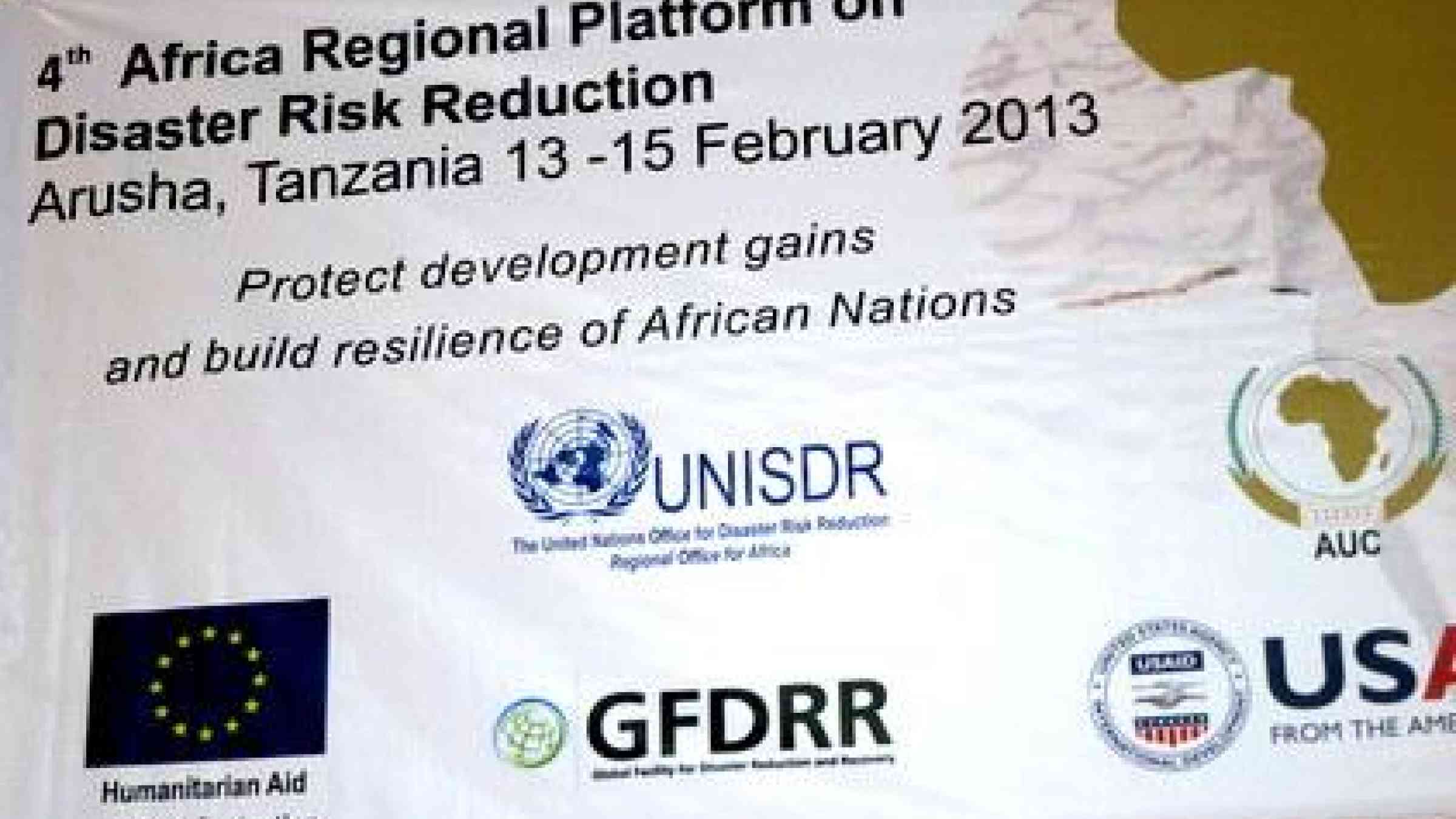HFA: “We have early warning, now we need early action”

ARUSHA, 13 February 2013 - It’s not instantly recognised, in Africa or anywhere else. But there was standing room only today for an intensive round-table discussion hosted by UNISDR, to tease out what this policy instrument has done for Africa over the last seven years and what direction should its successor take two years from now.
Its full title is the Hyogo Framework for Action (2005-2015): Building the Resilience of Nations and Communities to Disasters. For the disaster risk reduction community, it’s simply known as “the HFA”.
Over 150 people representing the disaster risk management community across the continent gathered to debate the merits or otherwise of the world’s first-ever action plan for disaster risk reduction agreed to by all UN member states in 2005 following the successive tragedies of the Bam earthquake in Iran (2003) and the Asian tsunami (2004).
Opening the round table discussion on the HFA as a curtain raiser to the 4th Africa Regional Platform on Disaster Risk Reduction, UNISDR Chief Margareta Wahlström said: “There has been significant progress in implementing the HFA globally. Much positive work has been done in many countries.
“However, disaster risks are very dynamic. Impacts affect people differently and the challenge is to capture that dynamism in the next global framework in 2015. Africa is the fastest growing economic region in the world and that brings opportunities and new challenges when it comes to managing risk in an increasingly urbanized world. Africa’s voice will be crucial to formulating the HFA2.”
Co-chair, Prof. Laban Ogallo, Director of the Climate Prediction and Applications Centre of the East African Inter Governmental Authority, said that Africa needs to speak with one voice on disaster risk reduction and he expected that the Africa Regional Platform would help to produce a single position paper for Africa which would be presented at the Global Platform for Disaster Risk Reduction in May.
He commented that a lot of challenges had been brought to the table. “We have early warning but we don’t have early action, so we need to work together and find out what went wrong and how to collaborate better. Community vulnerability is high and capacities are low and climate change is real, we need to work together to ensure that our women and children are using our resource base in a sustainable way. Africa needs to figure out what it wants, and we need to do in Africa what we can achieve ourselves.”
African Union Commissioner, Tumusiime Rhoda Peace, said : “What we want to see is Africa making DRR a priority at country level with the lead of the Ministries of Finance.”
Here follows some summary highlights from the discussion:
Dominique Kuitsouc (ECCAS): HFA is still not well known in many government ministries. Or they have heard the name but don’t know the content. HFA2 should consider a large dissemination exercise through the media or other means on what the content is. We should take advantage of climate change meetings and other regional meetings for HFA2 consultation.
Mariama Ousseini, Niger DRR National Platform: DRR priorities until 2015 and beyond should include development of strong early warning systems, national disaster loss databases and climate information for communities.
Mary Mye Kamara, Sierra Leone DRR National Platform: HFA was an opportunity to address DRR systematically. Still weak political commitment to DRR, not much has been done in terms of allocation of resources for DRR and disaster management. Decentralization of the activities at national level are still a huge challenge. At community level there are few capacities and strategies for DRR; a more practical approach is needed. DRR has not been engendered and women have not been addressed enough, women are left behind in many African countries, let’s do better on this next time.
Tadesse Bekele, Ethiopia, DRR National Platform: Strategic areas post 2015, Ethiopia has revised its DRR policy. We want to have a multi-hazard and multi-sectoral approach and be proactive instead of reactive with an emphasis on disaster risk assessments and disaster risk profiles. Government takes the lead on national DRR programmes but has many other stakeholders involved.
Gedi Abdi, social worker, Wajir County, Kenya: Bad governance and bureaucracy, lack of effective communication and illiteracy contribute to poor implementation of the HFA at local level. There is marginalization. Education is the key to resilience. Organizations which come to assist often have pre-set ideas about what needs to be done but are supposed to ask what are the priorities and challenges for the communities they are working and communicate with them on ideas, and feelings, so that trust and confidence can be established. This is not happening.
Prof. Dewald van Niekerk, North-West University, South Africa: Academic research institutions should be utilized for resilience building at grass-roots level. Resilience is not a goal in itself but a spot on the way to sustainable development. Cost-effectiveness and benefits of DRR have not yet been shown sufficiently in Africa.
Dominique Davoux, EU Delegation, Kenya: People should be able to move out of vulnerability and have access to markets and services. We need local infrastructure. Important to establish link with MDGs and poverty reduction. Budgetary allocations for DRR from governments are important.